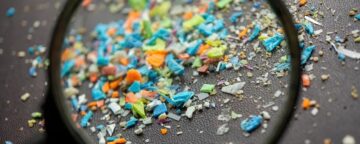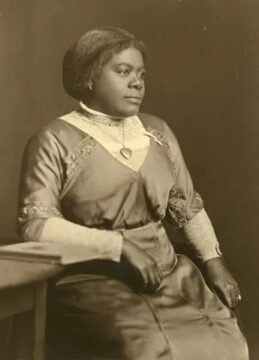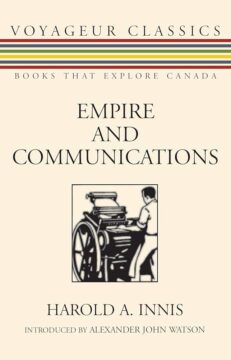John Banville at The Guardian:
 A time there was, and a recent time, when big beasts stalked the groves of academe. This was in the last quarter or so of the 20th century, the leafy days of Althusser and Paul de Man, of the terrible twins Guattari and Deleuze, of Foucault, Derrida and Sollers, of Susan Sontag and the delightful Julia Kristeva. It was the age of theory, after the demise of the new criticism and before even a shred of cannon smoke was yet visible above the battlefields of the coming culture wars.
A time there was, and a recent time, when big beasts stalked the groves of academe. This was in the last quarter or so of the 20th century, the leafy days of Althusser and Paul de Man, of the terrible twins Guattari and Deleuze, of Foucault, Derrida and Sollers, of Susan Sontag and the delightful Julia Kristeva. It was the age of theory, after the demise of the new criticism and before even a shred of cannon smoke was yet visible above the battlefields of the coming culture wars.
How sure of ourselves we were, the heirs of Adorno and Walter Benjamin. We knew, because Nietzsche had told us so, that there are no facts, only interpretations – sound familiar, from present times? – and that danger alone is the mother of morals. We listened, rapt, to the high priests of structuralism, post-structuralism, postmodernism, und so weiter. We pored in anxious excitement over the hermetic texts of the new savants, encountering sentences such as this, from the pen of a German-born academic who had been long settled in Britain, and who in the last decade of his life would mutate into a world-famous novelist: “The invariability of art is an indication that it is its own closed system, which, like that of power, projects the fear of its own entropy on to imagined affirmative or destructive endings.”
more here.
Enjoying the content on 3QD? Help keep us going by donating now.

 In December 1999, around her 65th birthday,
In December 1999, around her 65th birthday,  Coates’s The Message grapples with the question of whose stories get told, and how that forges our reality. As he writes halfway through: “Politics is the art of the possible, but art creates the possible of politics.” Known for his searing critiques of racial injustice, he came to wider attention with a 2014 essay
Coates’s The Message grapples with the question of whose stories get told, and how that forges our reality. As he writes halfway through: “Politics is the art of the possible, but art creates the possible of politics.” Known for his searing critiques of racial injustice, he came to wider attention with a 2014 essay  In early February 2020, China
In early February 2020, China  Self-expression is good, we tell ourselves, and it’s good to hear what others have to say. The more we’re able to converse, to share our thoughts, opinions, and experiences, the better we’ll understand one another and the more harmonious society will become. If communication is good, more communication must be better.
Self-expression is good, we tell ourselves, and it’s good to hear what others have to say. The more we’re able to converse, to share our thoughts, opinions, and experiences, the better we’ll understand one another and the more harmonious society will become. If communication is good, more communication must be better. M
M Mary McLeod Bethune (1875-1955)
Mary McLeod Bethune (1875-1955) C
C With its emphasis on media’s formative role in a society’s development, “Minerva’s Owl” would come to be seen as a founding document — maybe the founding document — of the academic discipline of media studies that emerged in the second half of the twentieth century. In 1964, the celebrated media savant Marshall McLuhan, who like Innis was a professor at the University of Toronto, wrote that he saw his own recent book, The Gutenberg Galaxy, as “a footnote to the observations of Innis.” The distinguished American educator and media theorist James Carey called Innis’s work “the great achievement in communications on this continent.”
With its emphasis on media’s formative role in a society’s development, “Minerva’s Owl” would come to be seen as a founding document — maybe the founding document — of the academic discipline of media studies that emerged in the second half of the twentieth century. In 1964, the celebrated media savant Marshall McLuhan, who like Innis was a professor at the University of Toronto, wrote that he saw his own recent book, The Gutenberg Galaxy, as “a footnote to the observations of Innis.” The distinguished American educator and media theorist James Carey called Innis’s work “the great achievement in communications on this continent.” S
S
 Eric Kaufmann: Obviously you in your book, The Identity Trap, give a pretty good account of one route, I think, towards this, which is sort of the whole idea of strategic essentialism that came out of left-wing intellectual thought. I know yourself and Francis Fukuyama and Chris Rufo and others have sketched out its development out of essentially the post-Marxist left. What I try to do in my book, The Third Awokening, is to look at the more liberal humanitarian, if you like, prong of this, which runs through psychotherapy and gets us towards a kind of humanitarian extremism. And so I put a lot of emphasis on this idea of cranking the dial of humanitarianism.
Eric Kaufmann: Obviously you in your book, The Identity Trap, give a pretty good account of one route, I think, towards this, which is sort of the whole idea of strategic essentialism that came out of left-wing intellectual thought. I know yourself and Francis Fukuyama and Chris Rufo and others have sketched out its development out of essentially the post-Marxist left. What I try to do in my book, The Third Awokening, is to look at the more liberal humanitarian, if you like, prong of this, which runs through psychotherapy and gets us towards a kind of humanitarian extremism. And so I put a lot of emphasis on this idea of cranking the dial of humanitarianism. Adrian Ward had been driving confidently around Austin, Texas, for nine years — until last November, when he started getting lost. Ward’s phone had been acting up, and Apple maps had stopped working. Suddenly, Ward couldn’t even find his way to the home of a good friend, making him realize how much he’d relied on the technology in the past. “I just instinctively put on the map and do what it says,” he says.
Adrian Ward had been driving confidently around Austin, Texas, for nine years — until last November, when he started getting lost. Ward’s phone had been acting up, and Apple maps had stopped working. Suddenly, Ward couldn’t even find his way to the home of a good friend, making him realize how much he’d relied on the technology in the past. “I just instinctively put on the map and do what it says,” he says. Cleaver was born into and lived in a segregated world and didn’t question it. Once segregation was made illegal*, he realizes the world he was in, writing “Prior to 1954, we lived in an atmosphere of novocain. Negroes found it necessary, in order to maintain whatever sanity they could, to remain somewhat aloft and detached from ‘the problem.’ We accepted indignities and the mechanics of the apparatus of oppression without reacting by sitting-in or holding mass demonstrations.” (Cleaver, 4-5) Most of the African American writers I have read either grew up before segregation ended or after.
Cleaver was born into and lived in a segregated world and didn’t question it. Once segregation was made illegal*, he realizes the world he was in, writing “Prior to 1954, we lived in an atmosphere of novocain. Negroes found it necessary, in order to maintain whatever sanity they could, to remain somewhat aloft and detached from ‘the problem.’ We accepted indignities and the mechanics of the apparatus of oppression without reacting by sitting-in or holding mass demonstrations.” (Cleaver, 4-5) Most of the African American writers I have read either grew up before segregation ended or after.